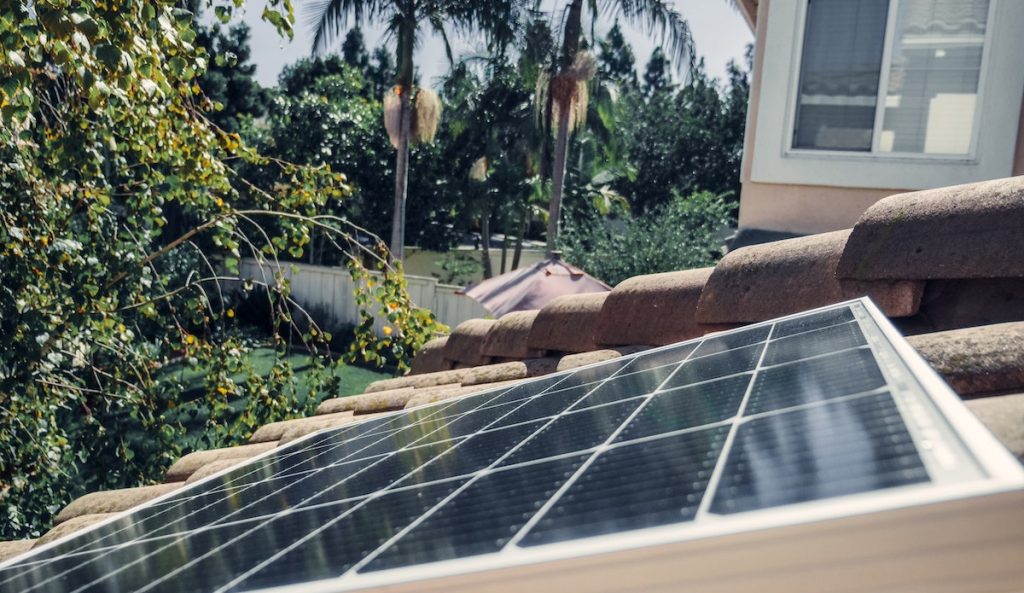Are you thinking about investing in solar panels for a sustainable home?
Solar power is an excellent solution for reducing your family’s reliance on electricity. But, as there are so many styles on the market, it can be difficult to choose what’s best for you.
Choosing the most efficient solar panel is essential for saving money and energy in the long run. The good news is that there are plenty of high-tech options on the market.
Here’s our guide to selecting the most efficient type of it and solar panel benefits.
Table of Contents
Understanding Solar Cell Efficiency Ratings
Solar cells are the most efficient kind of solar panel. This makes them ideal for residential homes, commercial buildings, and utility-scale projects.
Solar cells are made up of photovoltaic (PV) material such as silicon. It captures sunlight and converts it into electricity. The higher the efficiency rating of the solar cells, the more electrical energy they can generate.
Solar cell efficiency ratings are determined by the amount of green energy received. It is also determined by the amount of electrical energy produced. These same principles can be used for larger installations such as solar farms.
Solar farms can be used to generate large amounts of electricity over a large area. It is also used to generate electricity during cloudy periods, due to the efficiency of the solar cells. This is the most efficient kind of solar panel for many applications.
Monocrystalline
Monocrystalline is one of the different kinds of solar panels. They are usually the most efficient kind of solar panels available on the market today. These types of panels are made from a single silicon crystal.
They are characterized by their efficiency and longevity. Monocrystalline panels are cut into thin, efficient wafers and then soldered together to form the panel that is connected to the system.
They typically have higher efficiency ratings compared to the other types. That results in producing the highest amount of electricity per square meter. It is also better at inducing power production in less ideal weather conditions than the other types.
They also last longer and withstand extreme temperatures, especially in hotter climates. Also, they require less maintenance, making them even more attractive to homeowners. You can look at Blue Raven Solar for you to have more knowledge about it.
Polycrystalline
Polycrystalline solar panels are also referred to as multi-crystalline or polysilicon. They are most efficient when it comes to capturing solar energy. They are also good at harnessing it to generate electricity.
These thin layers of silicon are usually smaller than other types. That results in making them ideal for small rooftop installations or other uses when small space is required. They can be mounted almost anywhere and require little maintenance.
They also have a sleeker, simpler appearance than some of the other more traditional styles. Polycrystalline solar panels perform well even on cloudy days. They are also among the most affordable type, making them a great choice for homeowners to implement in their homes.
Thin-Film Solar Panels

Thin film solar panels are also known as “TFSPs”. They are designed to take up less space compared to standard solar panels. They are also offering increased installation flexibility.
They are built with a series of thin films, typically made of metal, polymer, or metal oxide materials, mounted on a glass substrate. This unique design allows them to capture low-angle and diffuse light more effectively. That makes them ideal for nearby residential and commercial applications.
TFSPs also incorporates an improved cooling system. It typically has a higher temperature tolerance.
The usage of this type is becoming more widespread. It is because their price has dropped significantly. There are also other types of a thin film.
Amorphous Silicon (a-Si)
They are made of a thin layer of silicon deposited onto glass sheets or stainless steel. Its materials are making them both lightweight and highly efficient. The silicon layer is highly reflective, making it absorb more of the sun’s energy, resulting in higher wattage output.
They also take up less space than traditional ones, allowing more panels to be installed in a smaller area. Also, they require fewer components and require less energy to manufacture than traditional panels. They are becoming increasingly popular for residential and commercial rooftops, due to their efficiency and simplicity of installation.
Cadmium Telluride (CdTe)
This film is about two times higher than what is seen with traditional silicon-based panels. CdTe thin film also performs poorly in low levels of light, making it ideal for applications that require bright sunlight.
Also, it is much more lightweight than traditional solar panels. That feature makes it easier to install and transport. It is also extremely durable, making it ideal for those who require a strong, reliable panel.
Copper Gallium Indium Diselenide (CIGS) Thin-Film
CIGS has one of the best energy efficiencies. It offers excellent performance against heat, cold, and humidity. That factor makes them a great option for residential or commercial purposes.
It generates an impressive amount of power. Its lightweight construction and cost-effective production make it very popular in both industrialized and developing countries. Also, due to the absence of lead and other toxic materials, its disposal is environmentally friendlier compared to other types.
Passivated Emitter and Read Cell Panels (PERC)
PERC has a thin film within the panel structure. It re-absorbs a majority of the reflected sunlight which would otherwise be lost. This thin film also increases the quality of the solar cell.
The use of PERC panels results in higher temperature sensitivity compared to traditional types. At the same time, it provides more power per square meter resulting in a more effective use of space.
Installation Guide for Setting Up the Most Efficient Solar Panel System
To conclude, different types of solar panels are all efficient in their own right. But, when comparing the outputs of all the different technologies, monocrystalline and polycrystalline solar panels are the most efficient. Learn more, and see which solar panel is right for you with our experts today.
If you find this helpful and want to read more great content, check out our latest blog posts now!

Alex is fascinated with “understanding” people. It’s actually what drives everything he does. He believes in a thoughtful exploration of how you shape your thoughts, experience of the world.



